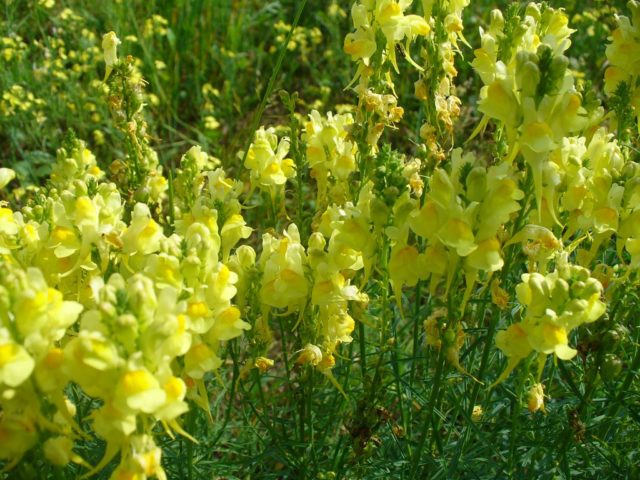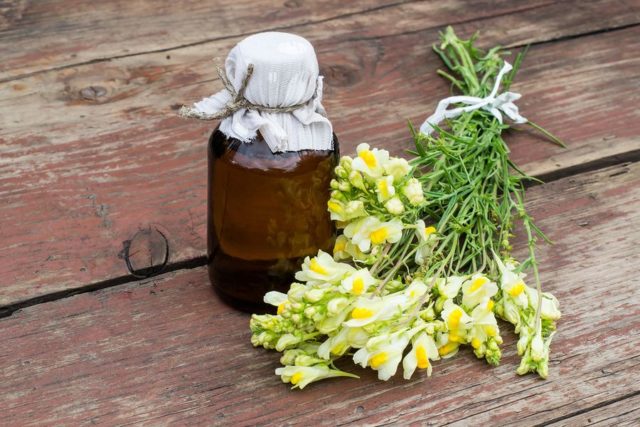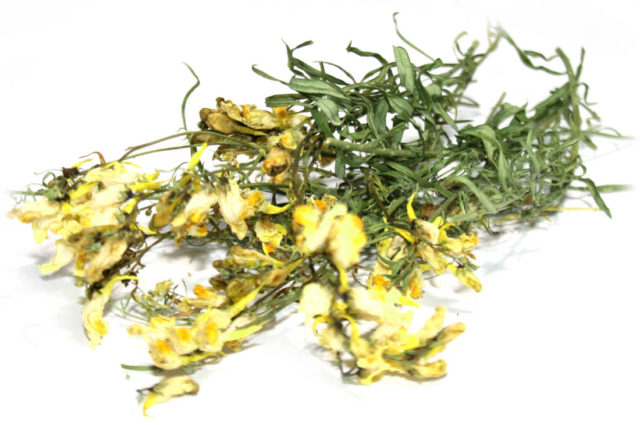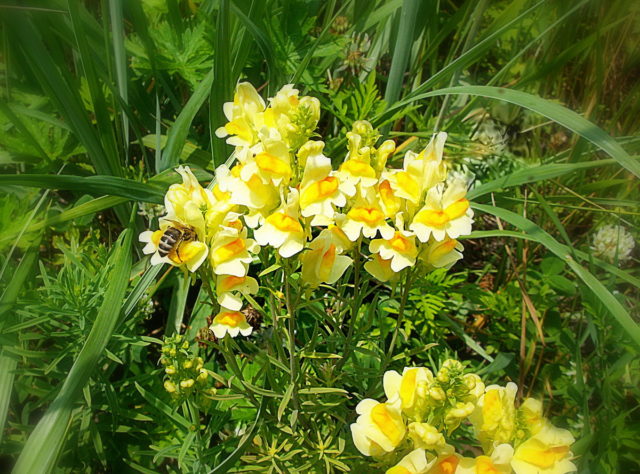Content
Medicinal properties and contraindications to toadflax are determined by its unique chemical composition. This is a perennial herb from the plantain family, distributed throughout Eurasia. It usually grows in abandoned fields, meadows, orchards. People call it:
- wild or feminine flax;
- gills, rams;
- dogs;
- guillemot, flax of the Virgin Mary.
Fresh female flax has pronounced insecticidal properties.
Toadflax chemical composition
Toadflax contains the following substances and elements:
- the alkaloid peganin, which normalizes blood pressure and heart rate, increases the tone of the smooth muscles of the intestines and uterus;
- organic acids - malic, acetic, formic, citric - they have antimicrobial and antioxidant properties, improve metabolism;
- saponins and pectins;
- vitamin C, which increases immunity, carotene;
- flavone glycosides (linamarin, pectorinarin) increase the elasticity of blood vessels;
- tannins, vegetable oils.
Seeds of female flax are 35% fatty oils.

Useful properties of toadflax
Decoctions, infusions and ointments based on the common toadflax herb have a powerful effect on the human body:
- anti-inflammatory, analgesic and antimicrobial;
- laxative, diuretic, which reduces the formation of gas in the intestines;
- antioxidant and anti-cancer;
- choleretic, tonic and tonic;
- antipyretic, diaphoretic, removing toxins and toxins from the body;
- antihistamine and expectorant;
- reducing pressure;
- normalizing the digestive tract and metabolism.
Toadflax harm
Common toadflax is not a harmless plant. The presence of alkaloids and glycosides in its composition makes the plant poisonous to humans and domestic animals. The main symptoms of poisoning with this perennial are as follows:
- dizziness and decreased pressure, fainting;
- severe cutting pain in the abdomen, diarrhea;
- profuse salivation;
- nausea, vomiting.
Taking inside drugs from female flax, you should carefully monitor the reaction of the body. In case of the appearance of negative symptoms, the course must be stopped immediately.
Contraindications to toadflax
Common toadflax, like other plants, has a number of restrictions on its use:
- individual intolerance, expressed by allergic reactions - edema, itching, rash;
- periods of pregnancy and breastfeeding of the baby;
- children up to age 14;
- high blood pressure;
- cirrhosis of the liver, renal failure.
People with tachycardia can also cause significant harm to their health when taking this drug.
Rules for the use of toadflax
When deciding to use toadflax, it must be remembered that it is not officially registered as a medicine. Traditional medicine recommends adhering to the following rules when using it:
- dried stems, leaves and flowers of female flax should be free of impurities and odors, bitter-salty taste;
- the course of admission is no more than 10 days, if necessary, re-treatment take a break of 2 weeks;
- juice as an anthelmintic is taken before bedtime, on an empty stomach, 20 ml each;
- oil infusion of herbs with the addition of hot pepper is an excellent external remedy for joint pain, for rubbing the chest and back with bronchitis;
- an ointment made from animal internal fat and crushed doggie is effective for skin problems, lichen, eczema;
- alcohol infusion can be used for acne, as well as inside 10-20 drops before meals;
- decoction of the plant can be consumed 2-4 times a day for a dessert spoon.
During heat treatment, common toadflax does not lose its healing properties, so it can be infused in boiling water, boiled and simmered in a water bath.

Toadflax application
The medicinal properties of toadflax have been little studied by official medicine. Only its mild laxative effect, which does not irritate the intestines, has been proven, as well as choleretic and diuretic properties. In Germany, water infusions are prescribed for jaundice, inflammation of the urinary system and hemorrhoids. In East Asia, toadflax preparations are used as a mild sedative for biting wild animals and bedwetting.
In folk medicine, toadflax is used for the following problems:
- poisoning and metabolic disorders;
- conjunctivitis, fungal infections of the skin;
- dizziness, anemia, flatulence;
- colds, hepatitis, tonsillitis;
- cystitis, cycle disorders in women;
- chronic constipation and eczema;
- Meniere's syndrome and furunculosis.
Decoctions and infusions of this medicinal plant successfully prevent hair loss, improve male potency.
Collection and storage rules
For medicinal purposes, the toadflax grass should be harvested during the period of abundant flowering. Depending on the climatic conditions of the region, this may be the beginning of summer or August-September.
The collected stems with inflorescences must be sorted out, separating the rotten, diseased and pest-affected specimens. Raw materials are dried in the open air, in well-ventilated places carefully sheltered from the sun. It is not recommended to dry the plant indoors: when fresh, it emits an unpleasant odor, which is difficult to weather later.
The herb should be stored in linen bags or closed wooden containers, in a dry ventilated room without access to sunlight. The shelf life of the harvested raw materials, subject to all conditions, is 24 months. If a foreign smell, mold, bugs appear, then the grass is unsuitable for consumption.

Photo of toadflax grass
Description of toadflax:
- a very beautiful herbaceous perennial grows up to 40-60 cm;
- has a thin creeping rhizome and a straight stem, covered with many elongated leaves;
- at the top, long racemes are formed with many golden-yellow small flowers with an original structure.
The stamens and pistils in the flowers are covered with the lower lip, so only large insects such as bees and bumblebees can pollinate the honey plant.

Conclusion
The healing properties and contraindications to common toadflax are known to folk healers for a long time. Since ancient times, the plant has been used to treat skin diseases, scars and purulent wounds, as a lotion on inflamed eyes, for bloody diarrhea. Diseases of the urinary system and gastrointestinal tract were effectively treated. Since common toadflax contains toxic substances in its composition, it should be used with caution, having read the contraindications. In the presence of chronic diseases, it is necessary to agree on the dosage with a qualified specialist.

